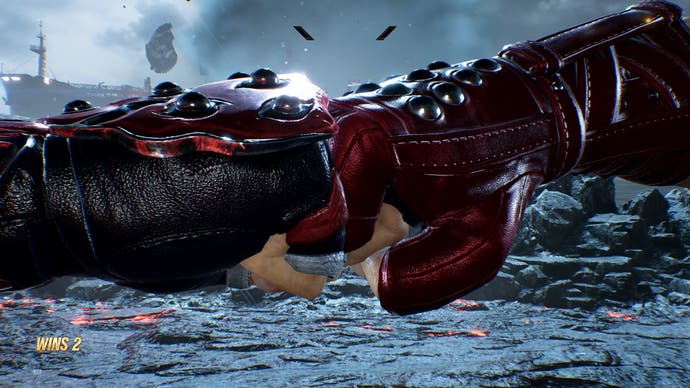John Linneman
Curated From www.eurogamer.net Check Them Out For More Content.
As 2023 comes to a close, I think it’s fair to say that the fighting game genre is in a great spot. Capcom and NetherRealm both launched stellar new entries in their respective franchises this year, with Street Fighter 6 in particular righting the wrongs of the previous numbered entry. In January of 2024, Bandi-Namco will unleash Tekken 8 – and I’ve played a near-final version of the game at an event, so I wanted to share my initial thoughts. This the first new fighting game to ship on Unreal Engine 5 while also skipping last-gen consoles and the Switch – so how does it fare thus far?
During my time with Tekken 8, I had a chance to play several different modes including the story mode, the arcade quest mode and Tekken Ball – more than what’s available in the publicly available demo. As feature-packed as Street Fighter 6 and MK1 are, there’s a sense that Tekken 8 might still have the most to offer.
Based on the first chapter of the story mode, this section feels like a natural evolution of what was achieved in Tekken 7 via a formula arguably pioneered in Mortal Kombat 9. That is to say that cutscenes and event sequences are used to chain together battles to tell a larger story.
Unlike Tekken 7 though, the new game doesn’t seem to rely on still image sequences, which previously featured a journalist explaining his investigation into the Mishima family. The demo version features Chapter 1 as well, but playing beyond this revealed that pacing and storytelling that feels like a significant improvement over the seventh mainline entry.
The very first battle featuring Jin and Kazuya is a nice showpiece for the new visuals. There are some pre-rendered scenes still, but many of the sequences are fully real-time, making for some slick transitions between cutscene and gameplay. The version I’m playing here was captured on PlayStation 5, with preliminary pixel counting in the story mode revealing a resolution of 2560×1440. We’ll count in more detail across more scenes in the final game but it’s looking to be a 1440p 60fps title which makes sense given the visuals and prioritising responsiveness.
Looking at all the modes we tested though, I’m largely pleased with the visuals. Character detail, while extremely over the top, is very well done – the game blows past the pre-rendered CGI in earlier Tekken games, in fact. I only wish the motion blur from Tekken 6 was an option, as it looked great, but perhaps other fighting game fans weren’t as into it as I was.

While at the event, I had a chance to speak with members of the development team – specifically the game’s director, Kouhei Ikeda, and one of its producers, Michael Murray. They confirmed, as I surmised, that Tekken 8 does not use core Unreal Engine 5 features like Nanite or Lumen, primarily owing to its strict 60fps target. Given the challenges developers have faced in building first-generation UE5 games, it makes sense and, honestly, the game looks glorious all the same.
I went back to playing around with Tekken 7 afterwards and it was less detailed than my memories led me to believe – between the geometric density of the characters to the skin shading and clothing, Tekken 8 is a significant leap forward.

Pausing one of the Tekken 8 character reveal intros makes plain the level of granular detail presented just in their respective gloves – the texture of the leather, the stitching, the shiny spherical decorations…it’s all good stuff. Going through the video frame by frame really helps you appreciate the animation, like hit impacts and particles that are necessary to ensure that each hit feels great without sacrificing responsiveness.
Compared to the demo available, I had a chance to test some other characters and arenas out. They’re all looking great, with a lot of fine detail chiseled into the various surfaces – either using geometry or smart texture work. Obviously, there will be more to say when the game is complete, but my first impressions on the visual side are very positive.
Beyond this, the Arcade Quest mode really piqued my interest. It basically drops you into a fictional world in which Tekken 8, the arcade machine, has just released. It seems like it tells a story as you travel across the land visiting other arcades, making it effectively a second story mode.
Tekken Ball is perhaps more of a gimmick in line with Tekken Bowl and the like, but hey, it could be enjoyable as a side mode.
I also noticed that, across every mode, the game’s input response was solid. Well, when I first sat down, the demo station had motion smoothing enabled so it felt wrong initially – but once we switched to game mode, it was fine.
Thanks to the demo release, I was able to test input lag more thoroughly and the game seems to exhibit only around 3.5 frames of lag – it feels exceptionally responsive and noticeably better than Tekken 7 on PS4. Previous Unreal Engine fighting games did seem to struggle to get input lag to low enough levels, so I’m glad there’s evidence of clear progress here.

Furthermore, on PS5 at least, loading times are reasonably swift, clocking in at just over four seconds – certainly faster than the last handful of Tekken games on console.
All this is to say that it feels responsive, quick and impactful – I’m really happy with what the team has delivered here. It’s a prettier game than Tekken 7 and feels better to play.
I’m also excited about the game’s soundtrack – Namco never misses when it comes to music and the tracks I’ve heard thus far confirm this.
It’ll be fascinating to see how the final release shapes up, so bring on 2024.
